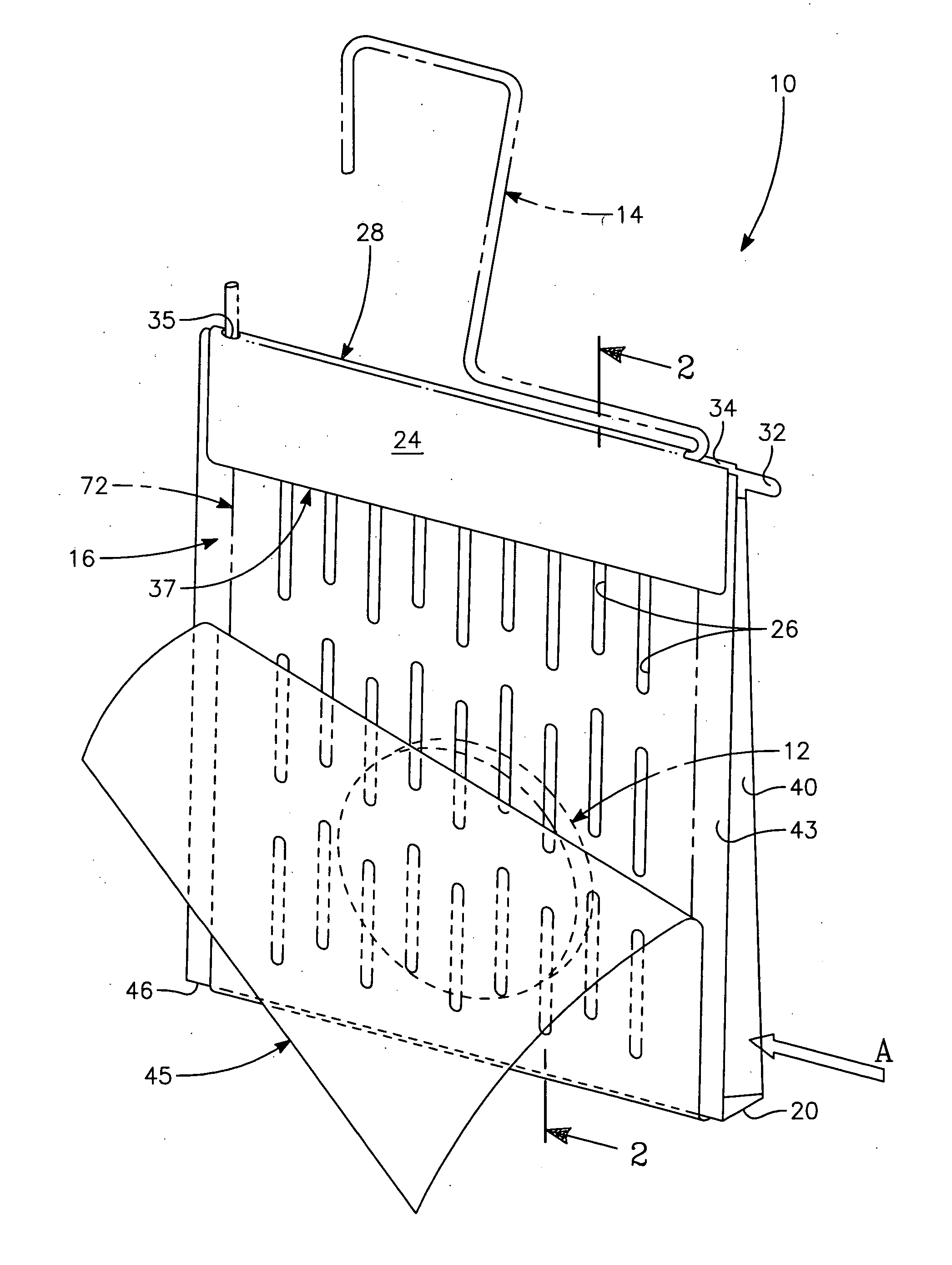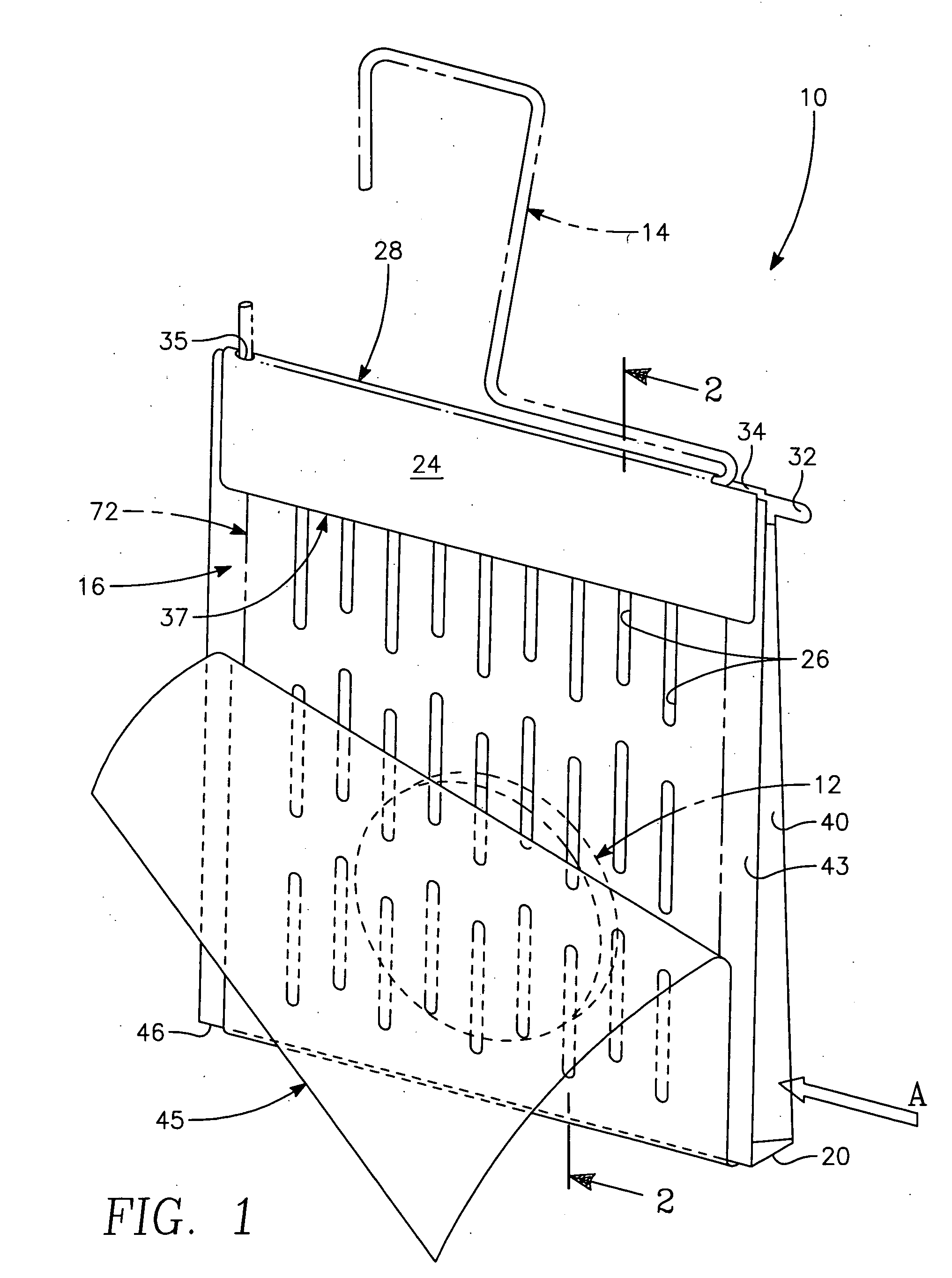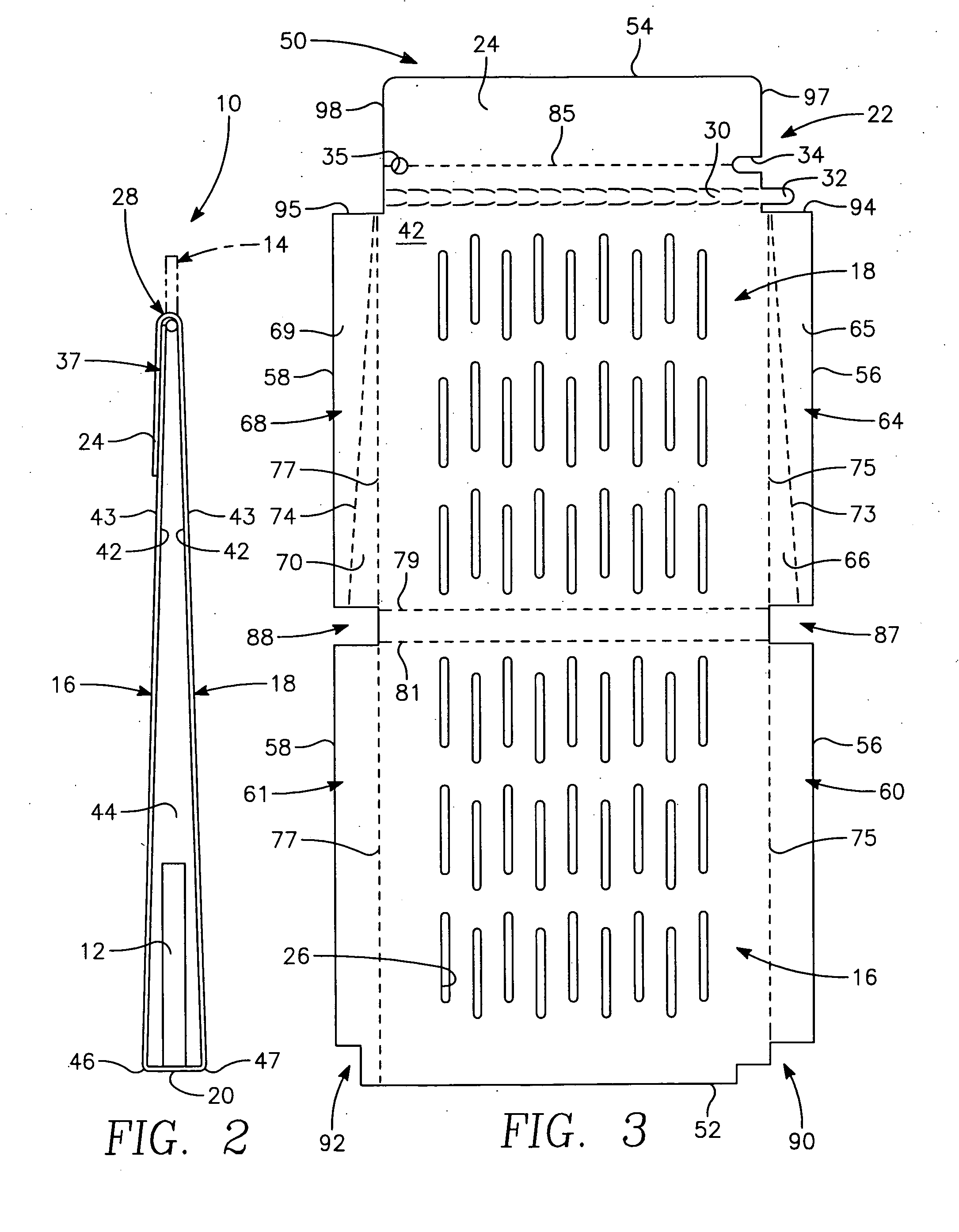Insect trap
a technology for insect traps and insect bites, applied in the field of insect traps, can solve the problems of complex and expensive production, too costly to be disposable, and existing traps that require multi-step assembly processes
- Summary
- Abstract
- Description
- Claims
- Application Information
AI Technical Summary
Benefits of technology
Problems solved by technology
Method used
Image
Examples
Embodiment Construction
[0018] With particular attention to FIGS. 1 and 2, the overall insect trap is shown by reference 10. The trap comprises a housing having a first sidewall 16 and a second sidewall 18. The sidewalls extend upwardly from a base 20. The base includes hinge means that interconnect the sidewalls. As shown, the base comprises a base wall with a width defined by the space between front edge 46 and back edge 47. As discussed hereinafter, the front and back edges are defined by score lines which may also function as the aforesaid hinge means.
[0019] The first sidewall extends from front edge 46 a predetermined distance to a top edge 52. The second sidewall 18 extends from back edge 47 to a flap edge 54. At least the exterior surface 43 of first sidewall 16 is provided with an effective amount and distribution of insect adhesive 72. To maximize effectiveness, it is preferred that selected exterior surfaces of both sidewalls be provided with insect adhesive.
[0020] Both sidewalls include vertic...
PUM
 Login to View More
Login to View More Abstract
Description
Claims
Application Information
 Login to View More
Login to View More - R&D
- Intellectual Property
- Life Sciences
- Materials
- Tech Scout
- Unparalleled Data Quality
- Higher Quality Content
- 60% Fewer Hallucinations
Browse by: Latest US Patents, China's latest patents, Technical Efficacy Thesaurus, Application Domain, Technology Topic, Popular Technical Reports.
© 2025 PatSnap. All rights reserved.Legal|Privacy policy|Modern Slavery Act Transparency Statement|Sitemap|About US| Contact US: help@patsnap.com



